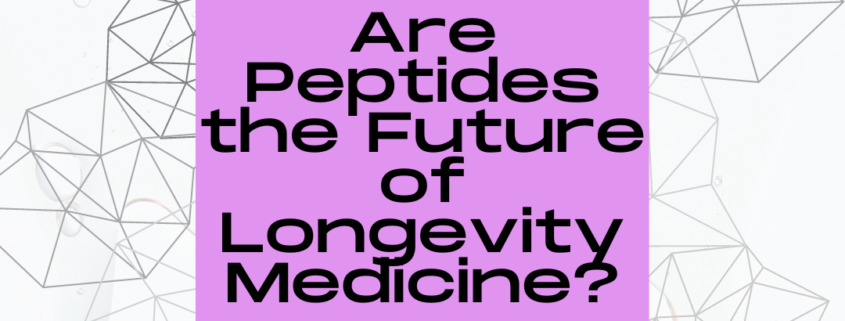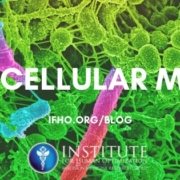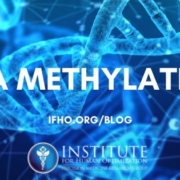Anti-Aging with Peptides: The Future of Longevity Medicine?
The promise of longer life is something that has captivated people for centuries. And while the Fountain of Youth has so far eluded us, researchers are constantly looking for new ways to extend our longevity. One promising avenue is the use of peptides to fight aging. peptides have a variety of anti-aging properties that could lead to longer, healthier lives for everyone. In this post, we’ll explore the potential of peptides and what they could mean for the future of longevity.
. . .
WHAT ARE PEPTIDES AND WHAT DO THEY DO IN THE BODY?
Peptides are made up of smaller units called amino acids, which are the building blocks of proteins. In the body, peptides perform a variety of important functions. They can act as hormones, enzymes, or even neurotransmitters. They are able to do this because they can bind to and activate receptors on cells. This interaction between peptides and cells is what allows them to exert their various effects in the body. There are many different types of peptides, each with its own unique function. For example, there are peptides that can increase collagen production, which can help improve skin elasticity and reduce wrinkles. There are also peptides that can help to increase muscle mass, and others that can boost the immune system.
There are two main types of receptors: G protein-coupled receptors (GPCRs) and enzymes.
GPCRs are found on the surface of cells, and they are activated when a peptide binds to them. This binding causes a change in the shape of the receptor, which in turn activates the G protein. The G protein then signals to other molecules inside the cell, resulting in a change in the function of that cell. For example, GPCRs can stimulate the production of enzymes, hormones, or proteins.
Enzymes are proteins that catalyze chemical reactions in the body. When a peptide binds to an enzyme, it can change the shape of that enzyme. This change in shape can either increase or decrease the activity of the enzyme. For example, some peptides can bind to enzymes that break down collagen, resulting in less collagen being produced. Other peptides can bind to enzymes involved in cell proliferation, resulting in an increase in cell growth.
HORMONES VS PEPTIDES
Hormones are another class of molecules that can bind to and activate receptors on both nuclear (within) and surface (on) the cells. Meaning, they can also exert a variety of effects in the body. However, there are some important differences between hormones and peptides. First, hormones are typically much larger molecules than peptides. This difference in size is due to the fact that peptide hormones are made up of multiple amino acids, while peptides are made up of just a few. Second, hormones are typically produced in endocrine glands (such as the pituitary gland or the thyroid gland), while peptides can be produced in many different tissues throughout the body. Finally, hormones circulate throughout the bloodstream, and have a systemic effect on cells anywhere in the body. Because of their size, hormones tend to have a more long-lasting effect in the body than peptides. In contrast, peptides are often localized to a specific area and only affect the cells nearby. For example, a peptide produced in the gut will only affect cells in the gut. This specificity means that peptides can be designed to have very specific effects in the body. This is why they are being studied for their potential use in a variety of different treatments.
Peptides are not meant to replace hormones, but they can be used to supplement them. For example, if someone is deficient in a particular hormone, peptides can be used to help increase levels of that hormone. Peptides can also be used to target specific receptors that are not affected by hormones. Hormones play a different role than peptides, and they work together to maintain homeostasis in the body.
How Do Peptides Work?
Peptides work by interacting with receptors on cells. This interaction can result in a change in the function of that cell. For example, some peptides can stimulate the production of collagen, while others can increase muscle mass. The specific effect that a peptide has depends on the type of receptor it binds to. There are two main types of receptors: G protein-coupled receptors (GPCRs) and enzymes.
GPCRs are found on the surface of cells, and they are activated when a peptide binds to them. This binding causes a change in the shape of the receptor, which in turn activates the G protein. The G protein then signals to other molecules inside the cell, resulting in a change in the function of that cell. For example, GPCRs can stimulate the production of enzymes, hormones, or proteins.
Enzymes are proteins that catalyze chemical reactions in the body. When a peptide binds to an enzyme, it can change the shape of that enzyme. This change in shape can either increase or decrease the activity of the enzyme. For example, some peptides can bind to enzymes that break down collagen, resulting in less collagen being produced. Other peptides can bind to enzymes involved in cell proliferation, resulting in an increase in cell growth.
Peptides Used in Anti-Aging
There are a variety of different peptides that have been studied for their potential use in anti-aging treatments. Some of the most common include:
GHRPs
Growth hormone-releasing p[1]eptides are a class of peptides that stimulate the release of growth hormone from the pituitary gland. Growth hormone is important for a variety of different functions in the body, including muscle growth, fat metabolism, and bone density. GHRPs are thought to be beneficial for anti-aging because they can help increase muscle mass, reduce body fat, and improve bone density.
GHK-Cu
Copper peptides are a type of peptide that has been shown to promote wound healing and tissue regeneration. GHK-Cu is a copper peptide that has been specifically studied for its anti-aging properties. GHK-Cu has been shown to stimulate the production of collagen and reduce the appearance of wrinkles. It has also been shown to improve wound healing and promote tissue regeneration.[2]
PKC Inhibitors
Protein kinase C (PKC) is an enzyme that plays a role in cell proliferation and cell death. PKC inhibitors are peptides that bind to PKC and prevent it from performing its function. PKC inhibitors are thought to be beneficial for anti-aging because they can help prevent cell death and promote cell proliferation. [3]
BPC57
BPC57 is a peptide that has been shown to have a variety of different effects, including reducing inflammation, stimulating wound healing, and promoting cell proliferation. BPC57 is thought to be beneficial for anti-aging because it can help reduce inflammation and promote tissue regeneration. [4]
Thymic Peptides
Thymic peptides are a type of peptide that is produced by the thymus gland. Thymic peptides are thought to be beneficial for the immune system, and they have also been shown to promote wound healing and tissue regeneration. Thymic peptides are thought to be beneficial for anti-aging because they can help improve the immune system and promote tissue regeneration. [5]
MOTS-C
MOTS-C has been shown to have a variety of different effects, including reducing inflammation, stimulating wound healing, and promoting cell proliferation.[6] MOTS-C is thought to be beneficial for anti-aging because it can help reduce inflammation and promote tissue regeneration.
While there is still much to learn about the potential use of peptides for anti-aging, the available evidence suggests that peptides can be beneficial for reducing the signs of aging. Peptides offer a unique approach to anti-aging, and we are hoping that they may provide a more effective, holistic, and safe alternative to traditional treatments. We can expect in the coming years, peptides will continue to play an important role in anti-aging treatments. With more research and development, we can expect to see even better results from these powerful molecules. Have you tried any peptide-based anti-aging products? Leave a comment below and let us know what you think!
[1] https://www.ncbi.nlm.nih.gov/pmc/articles/PMC5392015/
[2] https://www.ncbi.nlm.nih.gov/pmc/articles/PMC6073405/
[3] https://pubmed.ncbi.nlm.nih.gov/12056641/
[4] https://www.ncbi.nlm.nih.gov/pmc/articles/PMC6271067/
[5] https://pubmed.ncbi.nlm.nih.gov/2279904/
[6] https://pubmed.ncbi.nlm.nih.gov/31369811/









 IfHO
IfHO

Leave a Reply
Want to join the discussion?Feel free to contribute!